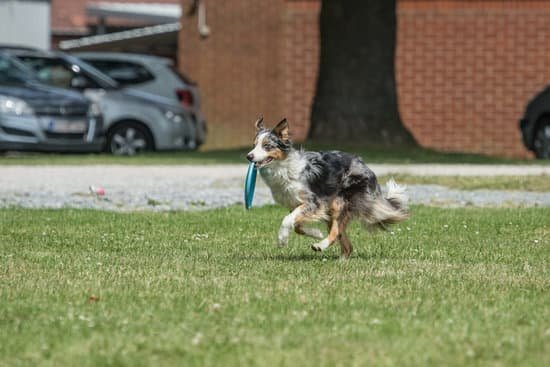Many people wonder, “Can I train my dog to become a service dog?” Understanding the role of a service dog is crucial in answering this question. Service dogs are highly trained to assist individuals with disabilities in their day-to-day activities, providing them with support and independence. These specially trained dogs are not only companions but also valuable aides to those in need.
The qualities and characteristics of a service dog are essential to consider when contemplating whether your dog can be trained for this special role. It’s important to understand the laws and regulations surrounding service dog training, as they vary depending on location. Knowing the specific requirements will help in determining if your dog can meet the standards set forth for service animal certification.
Training a dog to become a service dog requires dedication and commitment, but it can be a rewarding experience for both the handler and the canine companion. In this article, we will explore the steps and techniques for training a service dog, as well as the benefits and responsibilities that come with having one.
Additionally, we will cover resources and programs available for service dog training, along with real-life success stories of dogs who have successfully completed their training to become invaluable service animals.
Qualities and Characteristics of a Service Dog
A service dog is not just any ordinary pet. They are specially trained to assist individuals with disabilities in their daily lives. There are certain qualities and characteristics that a service dog must possess in order to effectively perform their duties. Some of these traits include:
- Intelligence and trainability: Service dogs need to be quick learners and able to understand and carry out complex commands.
- Calm and well-mannered: A service dog should remain calm in various environments and be well-behaved at all times, especially in public settings.
- Good physical health: The dog should be physically fit in order to perform tasks such as guiding the visually impaired or providing stability for someone with mobility issues.
- Empathy and patience: Service dogs need to have a strong bond with their owner, be attuned to their emotional state, and remain patient during times of distress.
These qualities are not innate in all dogs, which is why not every canine companion can become a service dog. It takes special training, temperament evaluations, and specific breeding for a dog to possess the necessary characteristics for this role.
Furthermore, it’s essential for a service dog to have a strong work ethic and dedication to their owner. They play a crucial role in the lives of individuals with disabilities, so it’s vital that they exhibit these important qualities. Training programs carefully assess these traits in dogs before considering them suitable for service work.
Laws and Regulations for Service Dog Training
When considering training your dog to become a service dog, it’s important to be aware of the laws and regulations that govern this process. In the United States, the Americans with Disabilities Act (ADA) defines a service dog as a dog that is individually trained to do work or perform tasks for a person with a disability. It’s crucial to understand these laws to ensure that your dog meets the criteria for being a service dog.
Some key laws and regulations for service dog training include:
- The ADA provides specific guidelines regarding where service dogs are allowed to accompany their handlers, including public places such as restaurants, stores, and public transportation.
- Service dogs are not required to be professionally trained, and owners have the right to train their own service dogs. However, the dog must be trained to perform specific tasks related to the handler’s disability.
- It is illegal for businesses or establishments to discriminate against individuals with disabilities who are accompanied by their service dogs.
It’s also important to note that while there are federal laws such as the ADA that apply nationwide, there may be additional state or local laws that pertain to service dogs. Before beginning the training process, prospective service dog owners should thoroughly research and understand all relevant laws and regulations in their area.
By familiarizing yourself with these laws and regulations from the beginning of your journey in training your dog as a service animal, you can ensure that both you and your canine companion are in full compliance with legal requirements throughout the training process and beyond.
Can I Train My Dog to Become a Service Dog?
Service dogs are specially trained to perform tasks that help people with disabilities or medical conditions. They must possess specific qualities and characteristics to effectively fulfill their role. One essential trait is obedience, as service dogs need to follow commands reliably, especially in potentially life-threatening situations.
They also need to be calm and have a stable temperament to remain focused on their handler’s needs, even in crowded or stressful environments. Additionally, they should be alert and observant to anticipate potential dangers or obstacles for their handlers.
Another important quality of a service dog is its ability to maintain self-control and composure at all times. This includes ignoring distractions such as food, other animals, or new people while working. Additionally, service dogs need to have excellent social skills, remaining well-behaved and non-aggressive in public settings where they may encounter various people and animals. Some common breeds known for possessing these characteristics include Golden Retrievers, Labradors, German Shepherds, and Standard Poodles.
Service dogs also require physical stamina as they often assist their handlers with tasks that involve physical activity such as opening doors, providing stability while walking, or retrieving items. They must also be able to endure long hours of work without showing signs of fatigue or discomfort. Overall, the qualities and characteristics of a service dog are crucial factors in determining its suitability for training and successful performance as an assistance animal.
| Qualities | Characteristics |
|---|---|
| Obedience | Reliable command following |
| Calmness | Stable temperament |
| Social Skills | Well-behaved and non-aggressive in public settings |
| Physical Stamina | Endurance for physical activity and long hours of work |
Steps and Techniques for Training a Service Dog
Training a service dog requires time, dedication, and patience. It is essential to start with the basics such as obedience training, socialization, and desensitization to various environments and stimuli. Positive reinforcement methods, such as treats and praise, are often used to teach desired behaviors. Consistency is key when establishing routines and commands for tasks related to a person’s disability.
One important step in training a service dog is task-specific training. Depending on the individual’s needs, a service dog may be trained to perform tasks such as retrieving dropped items, guiding visually impaired individuals, alerting to medical issues, or providing stability for individuals with mobility challenges. Each task requires specific techniques and careful training to ensure the dog can respond reliably in real-life situations.
In addition to task-specific training, it is crucial for service dogs to be well-behaved in public settings. This involves teaching the dog proper manners, such as walking on a loose leash, remaining calm around distractions, and ignoring other people and animals unless given permission to interact. Consistent exposure to different environments and scenarios is also necessary to help the dog generalize its training across various locations.
| Training Step | Description |
|---|---|
| Obedience Training | Teach basic commands like sit, stay, come, and heel using positive reinforcement. |
| Task-Specific Training | Train the dog to perform specific tasks related to the handler’s disability through repetition and positive reinforcement. |
| Public Manners Training | Expose the dog to various public settings while reinforcing good behavior for polite interactions. |
Benefits and Responsibilities of Having a Service Dog
Benefits of Having a Service Dog
Having a service dog can provide numerous benefits for individuals with disabilities. These specially trained dogs can help their owners with everyday tasks, provide emotional support, and even detect symptoms of medical conditions such as seizures or low blood sugar. Service dogs can also offer a sense of independence and improve the overall quality of life for their owners.
Service dogs are not only valuable companions but also play a crucial role in enhancing the mobility and confidence of individuals with disabilities. From guiding visually impaired individuals to alerting those with hearing impairments to important sounds, service dogs contribute significantly to their owner’s safety and well-being.
Responsibilities of Having a Service Dog
While having a service dog comes with various benefits, it also involves significant responsibilities. Owners of service dogs must ensure their canine companions receive proper care, training, exercise, and regular veterinary check-ups. Additionally, they should prioritize the welfare and comfort of their service dog by providing appropriate living conditions and a balanced diet.
Furthermore, it is essential for owners to respect the rights of businesses and public spaces when it comes to bringing their service dogs along. Understanding and following laws and regulations regarding service dogs is crucial for ensuring that they are allowed access to places where regular pets are prohibited.
Emotional Support and Companionship
In addition to the practical assistance provided by service dogs, these animals also offer emotional support and companionship to individuals with disabilities. They can alleviate feelings of loneliness, anxiety, depression, or stress that may be associated with certain conditions. The bond between a person and their service dog goes beyond functional assistance; it is often deeply emotional and enriching for both parties involved.
Having a service dog requires dedication and commitment from the owner but the rewards in terms of improved quality of life can be immeasurable.
Training Resources and Programs for Service Dog Training
When considering training your dog to become a service dog, it is important to have access to the right resources and programs. Many organizations offer training courses, workshops, and materials specifically designed for individuals who want to train their dogs for service work. These resources provide valuable information on the necessary skills and tasks that a service dog should be able to perform, as well as guidance on how to effectively train them.
One popular option for obtaining training resources for service dog training is through online programs and courses. These virtual platforms offer a wide range of educational materials such as instructional videos, learning modules, and written guides. Additionally, many online programs provide one-on-one support from experienced trainers, which can be beneficial for individuals who are new to service dog training.
Furthermore, there are also in-person training programs available in various communities. These programs often include group classes or individual sessions with professional trainers who specialize in service dog training. In-person training allows for personalized attention and hands-on learning experiences that can be highly effective in preparing both the dog and the owner for the demands of service work.
Ultimately, having access to quality training resources and programs is essential in successfully training your dog to become a service dog. Whether it’s through online courses or in-person workshops, these resources play a crucial role in providing the knowledge and support needed to ensure that your canine companion is able to perform their duties effectively.
Real-Life Success Stories of Training a Dog to Become a Service Dog
One heartwarming success story is that of Sarah and her service dog, Max. Sarah suffers from severe anxiety and panic attacks, which made it difficult for her to leave the house alone. After undergoing specialized training, Max became her loyal and devoted service dog. With Max by her side, Sarah can now go out in public with confidence, knowing that he is there to support and comfort her during stressful situations.
Another inspiring tale is that of David, who is visually impaired. With the help of a trained service dog named Luna, David has gained a new sense of independence and freedom. Luna assists him in navigating busy streets and obstacles, providing a sense of security that was previously unattainable. Through their strong bond and rigorous training, Luna has become an indispensable companion in David’s daily life.
Furthermore, there is the moving account of Maria and her son Nathan. Nathan has autism and struggled with social interactions and emotional regulation. After introducing a trained service dog named Buddy into their family, they observed remarkable improvements in Nathan’s behavior and emotional well-being. Buddy’s calming presence has helped Nathan manage his emotions better and develop greater social skills, bringing newfound joy and stability to their lives.
These real-life success stories emphasize the incredible impact that a well-trained service dog can have on individuals with various disabilities or challenges. They illustrate the profound bond between humans and their canine companions and highlight the life-changing benefits that come from training a dog to become a service dog.
Conclusion
In conclusion, the decision to train your dog as a service dog is a significant one that requires careful consideration. It is crucial to understand the role of a service dog and the qualities and characteristics they need to possess in order to be effective in their work. Additionally, being aware of the laws and regulations surrounding service dog training is essential for ensuring that you are following the proper protocols.
Training a dog to become a service dog is not an easy task and requires dedication, patience, and consistency. It is important to thoroughly research the steps and techniques for training a service dog, as well as seek out reputable training resources and programs. Understanding the benefits and responsibilities of having a service dog is also crucial in making an informed decision about whether this path is suitable for you and your canine companion.
While there are many real-life success stories of training a dog to become a service dog, it is important to remember that not all dogs are suitable for this role. It is essential to assess your dog’s temperament, abilities, and willingness before embarking on this journey.
Ultimately, making the decision to train your dog as a service dog should be based on careful consideration of all the factors involved, including the impact it will have on both you and your furry friend.
Frequently Asked Questions
What Is the Best Age to Train a Service Dog?
The best age to train a service dog is typically between 1-2 years old. This is the age when the dog has developed enough physically and mentally to take on training tasks. Starting the training at this age allows for enough time to properly train and socialize the dog before they begin their official service duties.
How Do I Train My Dog to Be a Therapy Dog?
Training a dog to be a therapy dog involves teaching them basic obedience, socialization, and specific therapy skills such as being calm in crowds and comfortable around medical equipment. It’s important to work with a professional trainer or organization that specializes in therapy dog training to ensure that the dog receives proper guidance and education.
How Do You Know if a Dog Will Make a Good Service Dog?
Determining if a dog will make a good service dog involves assessing their temperament, behavior, and physical ability. A good service dog candidate should be calm, confident, friendly, adaptable, and able to focus on tasks despite distractions.
They should also have good physical health and stamina to perform their duties effectively. Working with experienced trainers or organizations can help identify dogs with the potential to become successful service animals.

Welcome to the blog! I am a professional dog trainer and have been working with dogs for many years. In this blog, I will be discussing various topics related to dog training, including tips, tricks, and advice. I hope you find this information helpful and informative. Thanks for reading!





